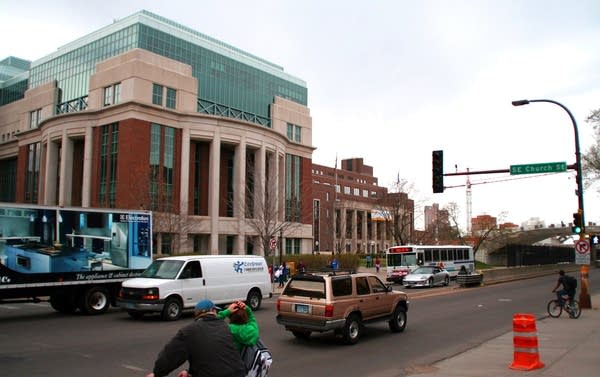Met Council, U of M reach a deal on Central Corridor
Go Deeper.
Create an account or log in to save stories.
Like this?
Thanks for liking this story! We have added it to a list of your favorite stories.

The Metropolitan Council and the University of Minnesota have finally struck a deal on how to weave a light-rail train through the university's sensitive research corridor.
The agreement follows more than two years of squabbling between the two institutions, a lawsuit filed by the U, and after a lengthy series of mediation sessions that began in April.
The university was worried that vibrations and electrical interference from the trains would interfere with sensitive lab equipment.
Negotiators for the U and Met Council announced Wednesday they have a plan to solve those problems.
Turn Up Your Support
MPR News helps you turn down the noise and build shared understanding. Turn up your support for this public resource and keep trusted journalism accessible to all.
The Metropolitan Council has agreed to place floating slabs under more than 1,400 feet of light rail track at points along Washington Avenue, where trains will run through the U's East Bank campus.
Met Council spokesman Steve Dornfeld says the slabs will cut down on the vibrations.
"It's a rubber undersurface that these slabs hold on, to absorb the train-caused groundborne vibration," he said.

The fix for the electromagnetic interference includes what the agreement describes as a "dual split power supply" along more than 3,000 feet of track.
The cost of the two modifications is not yet clear, according to Dornfeld. However, the Met Council has already planned on spending $33 million to solve other issues on streets and at intersections next to the U campus.
Dornfeld said Central Corridor planners knew all along there'd be extra costs to address the U's concerns, and they've built the expenses into the projected cost of the project.
There's also a contingency fund of about $144 million to draw on for unforseen expenses. But that money must also cover unexpected costs wherever they occur along the 11-mile light-rail line between downtown St. Paul and downtown Minneapolis.
One part of the agreement could add costs to the project well into the future. It requires the Met Council to monitor the effects of the slabs and the special wiring, to make sure they solve the vibration and electronic interference problems for as long as Central Corridor is in operation.
The University of Minnesota issued a written statement saying the agreement would protect the critical research mission of the university.
The Board of Regents is expected to act on the agreement at its Sept. 8 meeting. If the Met Council also approves, the U will withdraw its lawsuit challenging construction of Central Corridor.
The resolution of the lawsuit should help clear the way for the project's application for federal money. The federal government is expected to pay for half of the $957 million project connecting St. Paul to Minneapolis.
Still outstanding are two lawsuits, one filed by Minnesota Public Radio -- also over vibration concerns -- and another by neighbors in St. Paul charging discrimination in the Central Corridor planning process.
Heavy construction on the project begins in St. Paul after Labor Day and in Minneapolis later this fall.
(MPR's Laura Yuen contributed to this report)
---
Go to Transportation Nation for more of the latest transportation news from all across America.



